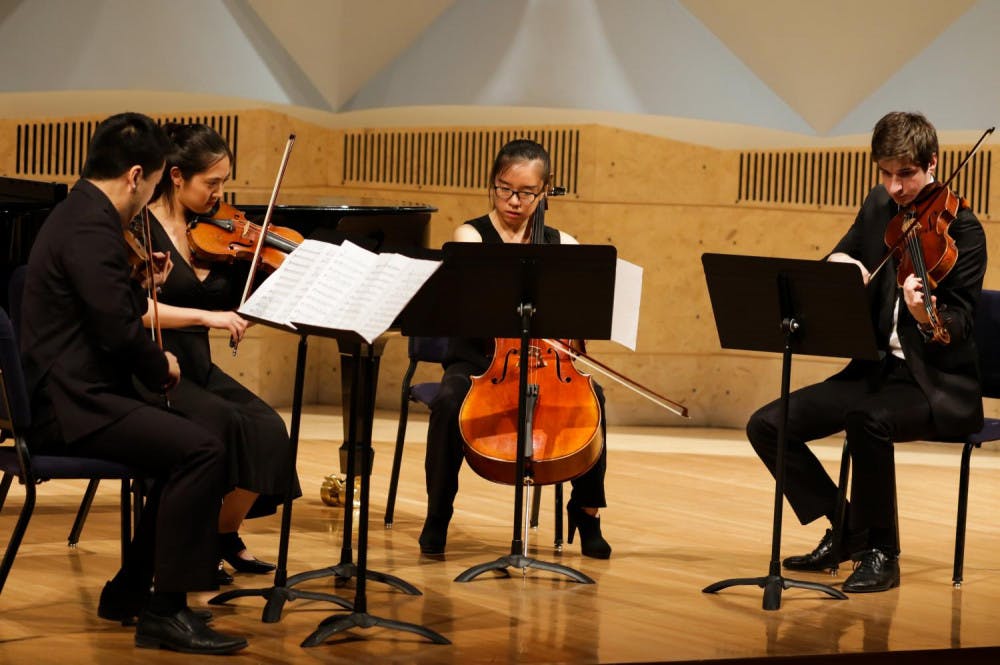On Wednesday, May 3, the students of MUSC0240: Performing Chamber Music held their culminating recital in Robison Hall. The program included songs by Johannes Brahms, a string quartet movement by Dmitri Shostakovich, an aria by Johann Sebastian Bach and a piano quartet movement by Gabriel Faure. The concert lasted approximately forty-five minutes and included some truly exemplary ensemble performances.
The first pieces performed were from Brahms’ Zwei Gesange, Op. 91, which translates to “Two Songs” for alto, viola and piano. I do not usually comment on the visual aspect of attending these concerts, but the setup for this part of the performance was new and exciting, so much so that I hardly knew where to look.
Something that differed greatly in this concert was that the violist stood, which attracted attention to him and helped to balance out where people looked. The singer stood beside the piano and faced the audience.
In any case, the music was wonderful. The viola added an entirely new dimension to the song that I had not previously heard performed live. It complemented the singer perfectly and gave the songs a more powerful sound than could be created from piano and voice alone.
The second piece was the second movement of Shostakovich’s 8th String Quartet in C Minor, Op. 110. It was one of the few modern pieces I have seen programmed this year in student ensembles, and this performance of it shows how more contemporary pieces can be played well. This movement is fast, rhythmic and exciting. The speed and competence with which the quartet played impressed the audience greatly.
Historical context informed the quartet’s conception, as it was written for the victims of fascism and war. The effects of pain and suffering Shostakovich communicates with this music come across clearly with or without this additional program, showing how well he met his goals. At just under three minutes, the movement was short, but in that time it provided a stark contrast to the opening songs.
After the string quartet, voice and piano performed JS Bach’s an aria from “Nun komm, der Heiden Heiland” BWV 61 named “Offne dich, mein ganzes Herze” in G Major. This piece featured the simplest orchestration of the evening, with just keyboard and voice, but its musical significance lay in its strict adherence to Baroque forms.
After hearing the wonderful performance of The Art of Fugue (Die Kunst der Fuge in German), hearing more Bach performed live was a treat.
Though known mostly for his short keyboard pieces like the Well-Tempered Clavier and the Goldberg Variations among modern audiences, Bach wrote vocal music that presents audiences with a wealth of listening material. The cantatas compose a significant portion of his list of works and many of them are not performed nearly proportionally to the instrumental works. Both pianist and singer performed this piece well, with an excellent degree of coordination between them.
The last piece was the first movement of Gabriel Faure’s 1st Piano Quartet in C Minor, marked allegro molto moderato. Even though it bears the mark of C Minor, one of the stormiest keys, the first movement’s tempo and rhythms suggest something more calm and tranquil. This fast movement has a fair amount of slower, more lyrical moments. It was interesting to watch the coordination between the pianist, violinist, violist and cellist for this piece. I imagine it took a great deal of focus to get the coordination between the parts just right, as the instruments switch in an out throughout the movement.




